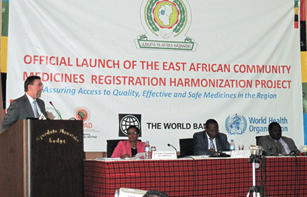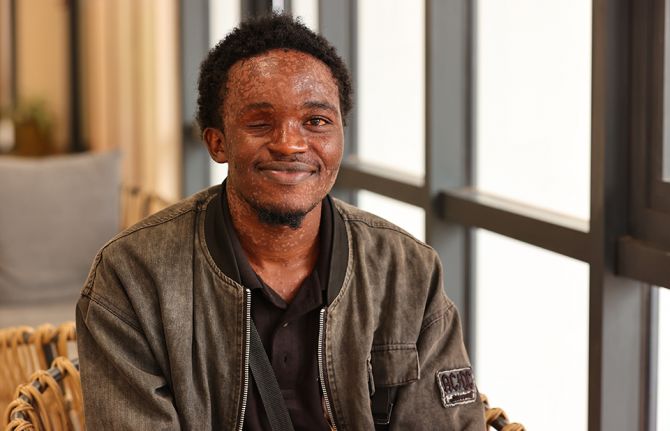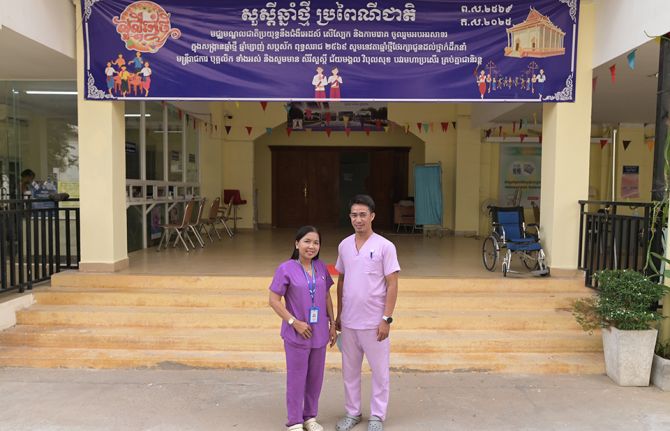
Feature Story
New initiative launched to deliver better, cheaper medicines to Africa
02 April 2012
02 April 2012 02 April 2012
UNAIDS Deputy Executive Director, Programme Dr Paul De Lay speaking at the launch of the East African Community (EAC) Medicines Registration Harmonization Project in Arusha, Tanzania, on 30 March 2012.
The need to ensure that people in Africa have access to essential, high quality, safe and affordable medicines has just received a major boost with the launch of the East African Community (EAC) Medicines Registration Harmonization Project in Arusha, Tanzania, on 30 March 2012.
The project is a high-level alliance bringing together the New Partnership for Africa’s Development (NEPAD), the World Health Organization (WHO), the Bill & Melinda Gates Foundation, the World Bank, the UK Department for International Development (DfID), and the Clinton Health Access Initiative (CHAI). The Arusha launch marks the starting point in the implementation of the broader African Medicines Regulatory Harmonization Programme across the continent.
The partners hope to strengthen regulatory capacity and systems for medicines in Africa, including antiretroviral drugs, so that fewer lives are lost due to drugs which are unsafe and of poor quality or which are largely unavailable or delivered inefficiently. These existing challenges can be attributed to a range of factors which include lack of human and financial resources, insufficient infrastructure, weak medicine legislation and a lengthy drug approval cycle caused by low regulatory capacity and inefficient processes.
“Access to safe, affordable and quality medicines for the treatment of common diseases remain out of reach to many people in the East African region as a whole,” said Dr Richard Sezibera, Secretary General of the East African Community. “The programme we are launching here today will put in place a uniform and standardized medicines regulatory framework for both good health outcomes and economic gains.”
The programme we are launching here today will put in place a uniform and standardized medicines regulatory framework for both good health outcomes and economic gains
Dr Richard Sezibera, Secretary General of the East African Community
The launch was attended by ministers, representatives from regional and pan-African bodies, international organizations and donors. One of the key arguments endorsed by those at the launch was the critical need to produce creative, African sourced solutions, responsive to the particular needs of African people.
This would encourage local production of medicines—such as antiretroviral therapy for people living with HIV—in partnership with other emerging economies like the BRICS group (Brazil, Russia, India, China, South Africa). In addition it would strengthen African control of development investments through more diversified funding sources which would reduce Africa’s dependence on external factors.
At present, Africa is heavily reliant on imported medicines. 80% of the antiretrovirals keeping more than 5 million African people alive come from abroad. In addition, two thirds of all AIDS expenditures in Africa come from external sources.
According to UNAIDS Deputy Executive Director, Programme Dr Paul De Lay, who attended the launch, creating an African Medicines Regulatory Agency would allow faster roll out of drugs, stronger quality assurance, greater public confidence and the enhancement of African ownership of a sustainable AIDS response.

(L to R) UNAIDS Deputy Executive Director, Programme Dr Paul De Lay, Ambassador Dr Richard Sezibera, Secretary General of the East African Community and UNAIDS representative for African Union.
“Regional regulatory agencies will deliver a range of benefits” said Dr De Lay. “Things will be faster, more efficient and fairer,” he added.
UNAIDS believes that such regional initiatives are an essential component of a successful response to HIV. These initiatives will provide a strong platform for advocacy, coordination and regulation to make high quality drugs more widely available across the continent.
An African Medicines Regulatory Agency would additionally allow a more rapid and far reaching response to reports of possible counterfeit or tainted drugs. It will also enhance capacity to test suspect batches of medicine. Such increased regional pharmacovigilance would protect health and save lives. It is hoped that the African Medicines Regulatory Harmonization Programme can help maintain the considerable progress made in the health sector in recent years.



